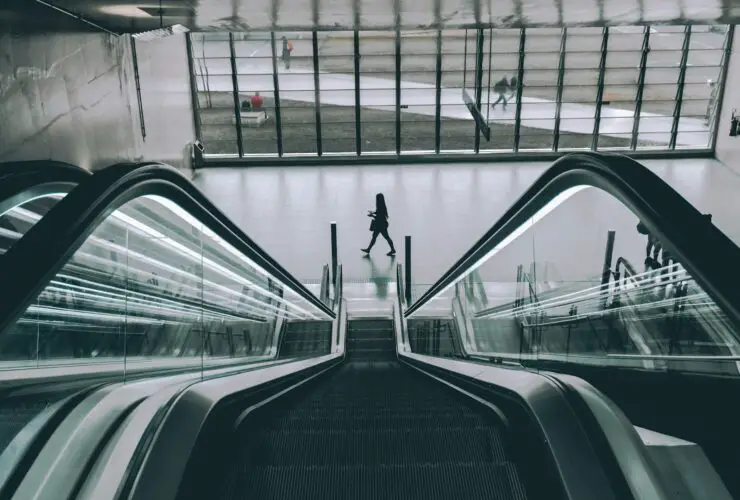7 Secrets from Analyzing Successful Sales Funnels
Do you ever wonder why some businesses seem to attract customers like a magnet? While their products may be great, the real secret often lies in their sales funnel game.
A well-designed sales funnel is like a super slide at the park. It guides potential customers smoothly from the awareness stage all the way down to making a purchase. The best funnels out there use creativity and psychology to keep people cruising along.
In this post, we’ll analyze some of the most successful sales funnels around. We’ll look under the hood to see what makes them work so well. Then we’ll share the juicy secrets you can use to build your own monster funnel.
What is a Sales Funnel?
A sales funnel is a way to visualize the journey a potential customer takes before becoming an actual paying customer. It outlines all the different stages they go through, from initial awareness to final purchase. Typically, a sales funnel has four main stages:
Awareness – The customer first learns about your product or service through marketing efforts like ads, content, word-of-mouth, etc.
Interest – They start evaluating your offering, comparing it to other options, and looking at details like features, pricing, reviews, etc.
Decision – The customer decides whether to purchase from you or go with an alternative solution that better fits their needs.
Action – They finally make the purchase and become a paying customer that you can then focus on retaining and getting repeat sales from.
An effective sales funnel acts like a helpful guide, smoothly leading the right prospective customers through each stage of awareness, interest, evaluation, and purchase decision. The best funnels engage and motivate people to keep moving forward through creative tactics and an excellent user experience.
Importance of a Good Sales Funnel
Having an optimized sales funnel is crucial because:
- It increases conversions by smoothing the buyer’s journey
- It allows you to analyze where potential customers are dropping off
- You can tweak different funnel stages to improve results
- An awesome funnel differentiates you from competitors
Think of it like a crossing guard who directs traffic at a busy intersection. Without one, everything is chaotic and dangerous. But with an experienced guard, cars and pedestrians flow through safely and efficiently.
Secrets from Successful Sales Funnel Examples
Let’s look under the hood at what some of the world’s best companies are doing with their sales funnels:
1. Creating Awareness Through Great Content
Companies like Ahrefs and Zapier are content creation machines. Why? Because great content is a powerful way to get people’s attention.
- Ahrefs publishes 4 brand new blog posts every week tackling common industry questions
- Their posts are super high-quality, thoroughly researched, and filled with visuals
- Zapier has a whole free university teaching people to “think with an automation mindset”
- They leverage integrations to get featured on complementary company blogs
By putting out a constant stream of valuable free material, these companies position themselves as trusted experts. People devour the content and naturally get interested in the products.
2. Using Interactive Tools to Drive Interest
Once someone is aware of your brand, you need to deepen their interest and get them to evaluate your product. Interactive experiences are great for this.
Look at Grammarly’s interactive demo that lets you experience their editor without signing up. Or Zendesk shows personalized product videos based on your interests. These pull people in and get them engrossed.
Even simple tools like Basecamp’s pricing calculator activate people’s interest by getting them to input their info. Once invested in the process, they’re more likely to stick around.
3. Building Trust with Social Proof
Before purchasing, people want confirmation that your product is legit. That’s where social proof comes in – stuff like customer testimonials, reviews, business logos, and stats.
Netflix showcases how many accounts were created recently Ahrefs lists client logos like Facebook and Uber Zapier uses real customer photos and stories.
Social proof feels like a warm hug, reassuring skeptical buyers. When deployed skillfully across your funnel, it builds credibility and nudges people towards purchase.
4. Offering Free Trials to Reduce Friction
One of the biggest hurdles to purchase is uncertainty and perceived risk. That’s why low friction-free trials are so powerful.
Netflix pioneered letting people test their service free for a month. Zapier offers a permanent free plan. Even Microsoft and Adobe have jumped on the free trial bandwagon.
- Lets users experience your product’s magic first-hand
- Reduces their purchase risk and anxiety
- Gets people inside your funnel, increasing conversion chances
- Frictionless way to acquire new customers
If you can eliminate barriers and get people to try your product, they’re much more likely to eventually convert to paying customers.
5. Creating Urgency with Scarcity Tactics
A classic psychology trick is using scarcity and urgency to motivate people to take action quickly. The best funnels incorporate this in creative ways:
- Groupon uses countdown timers showing deals expiring soon
- Grammarly and Zoma offer limited-time discounts to incentivize fast purchases
- Warby Parker only sends 5 sample frames, creating perceived scarcity
These tactics trigger loss aversion in people’s brains – the feeling of missing out on something. When done right, they compel customers to stop overthinking and buy now.
6. Leveraging Personalization
Generic, one-size-fits-all marketing is a turnoff in today’s world. The most successful funnels adapt to each user’s preferences and interests.
Look at how Zapier gives personalized workflow recommendations after you sign up. Or how Two Islands lets you build custom product bundles. It’s like getting a tailor-made experience.
- Makes customers feel understood and valued
- Allows you to address their specific needs and objections
- People prefer customized over generic any day
- Strengthens brand loyalty and repeat business
Smart personalization builds a tighter connection between customers and your brand. It signals you truly care about delivering an exceptional experience.
7. Focusing on Smooth User Experience
Behind every great funnel lies an obsession with user experience. From sleek websites to intuitive apps, removing friction is key.
Look at MailChimp’s free forever plan that instantly lets you experience its interface. Or Grammarly running massive YouTube ads to reach their target audience exactly where they are.
- Clean, uncluttered design that’s easy to navigate
- Fast loading times and mobile responsiveness
- Using the channels customers actually frequent
- Smooth onboarding to get people up and running fast
Good UX means never forcing people to work hard or get frustrated. It’s about making their experience seamless and even enjoyable.
Putting it All Together
As you can see, there’s an art and science to creating high-converting sales funnels. The best funnels harmoniously combine:
- Remarkable free content that builds trust
- Interactive tools that captivate interest
- Social proof that alleviates skepticism
- Free trials that eliminate purchase risk
- Scarcity that creates urgency
- Personalization that makes customers feel special
- Frictionless, delightful user experiences
It’s like an Italian grandmother’s secret pasta sauce recipe – simple ingredients combined through years of tweaking and love.
FAQs
Q: Isn’t a sales funnel just a complicated website? A: Not at all! A funnel is a strategic multi-channel approach to guiding potential buyers, both online and offline. While websites are part of funnels, the best ones also leverage content, ads, emails, tools, and more.
Q: How long does it take to build an effective sales funnel? A: It depends on your resources, but most solid funnels take 2-6 months to properly research, design, and implement across all the channels and stages. But it’s well worth the effort for the ongoing sales conversions.
Q: My product is very niche. Can funnels still work? A: Absolutely! In fact, niche products often benefit more from well-designed funnels. Since your audience is specific, you can hyper-personalize the experience and messaging to resonate deeply. Get creative!
Q: Won’t all these tactics seem gimmicky to customers? A: Not if executed authentically. The best funnels feel helpful and customer-centric, not salesy or manipulative. Always focus on your customers’ needs over conversions.
Q: This all sounds overwhelming. How do I get started?
A: Start small by mapping your current funnel and identifying leaks where customers drop off. Then Research your audience deeply to understand their motivations and objections. Build a funnel optimized for their specific journey one step at a time.




